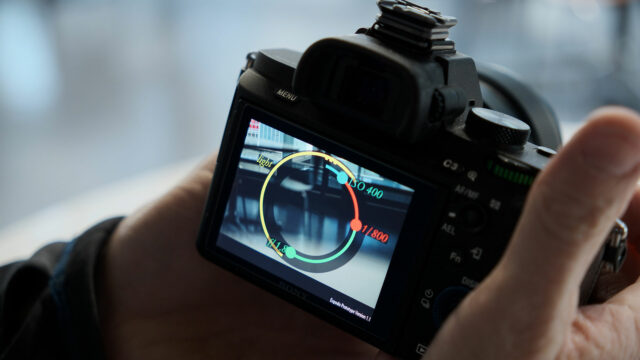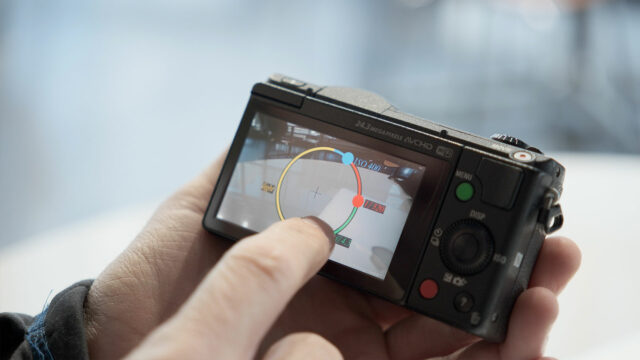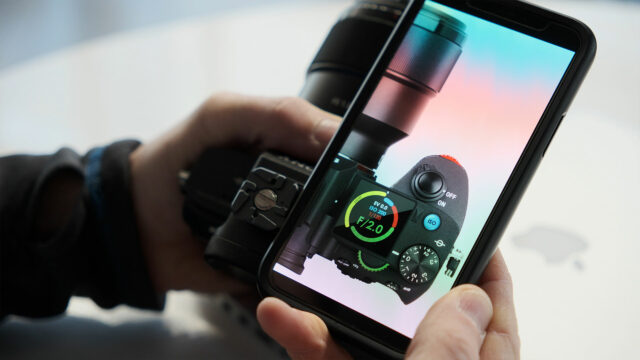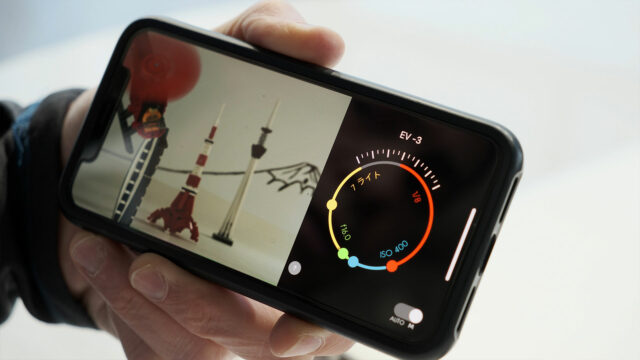EXPODO Exposure Donut – Intuitive Way to Manually Control Camera Exposure
EXPODO as in “Exposure Donut” is a new visual way how to easier learn the manual controls of a camera – light, exposure, sensitivity, and aperture. Represented by a four-colored donut, the software (currently in prototype on a few Sony cameras) could be implemented as a firmware update on existing cameras or a new haptic dial.
Last week, a part of the CineD team visited the CP+ camera and photo imaging show in Japan. Among other new interesting products, we also met up with Tim Helweg-Larsen, an engineer and camera enthusiast from the UK – who claims to have invented a better (easier) way how to master the manual controls of any digital camera. Let’s take a look at the details of his invention – EXPODO – the Exposure Donut.
EXPODO – Exposure Donut
The basic idea behind this product is to bring an easy user interface (similar to that in mobile phones’ camera apps) to large sensor cameras. In other words, to visualize the vital exposure settings to motivate camera users to switch to (or understand and use more often) manual controls.

As its name implies, the Exposure Donut has a shape of an actual donut. It is a circle-shaped tool that tells the photographer if the image is well exposed. It consists of four color bars (circle partitions, arcs):
- Red represents time (as in exposure-time/shutter speed in camera language)
- Yellow partition represents light
- Blue represents sensitivity (ISO)
- Green represents aperture

Every arc takes up a certain amount of columns depending on how long it is. The full circle is divided into 24 columns. If all the colors add up to 24, the image is well exposed. If the result is less than 24, the image is underexposed. Finally, if the final sum is more than 24, the image is overexposed.

Longer arcs add “blur”:
- A longer red arc means more motion blur (the shutter speed is slower, longer exposure time)
- A longer green arc means more background blur (the aperture is wider, lower f-stop)
- More blue translates into more grain blur (higher ISO so more noise)
The Exposure Donut received a grant from the UK government and it is now also a patented technology. EXPODO can be used exclusively or licensed as an industry standard (like MP3).
Price and availability
The Exposure Donut is currently in the prototype stage. Tim has a working Sony camera loaded up with the EXPODO interface and he is presenting the idea to camera companies. He claims the prototype software has been tested with multiple Sony cameras (a7 ii, a5100, RX100v). EXPODO could be implemented either as a firmware update on existing cameras or as a new haptic dial.

There is now also a prototype Beta iPhone app that shows how the Exposure Donut interface works. It is available via Apple TestFlight. Last but not least, you can get in touch with Tim via his e-mail if you have ideas, suggestions, or general feedback on his EXPODO prototype.
What do you think about the EXPODO Exposure Donut? Do you think it is an easier way how to learn the manual controls of a camera? Let us know in the comments section underneath the article.
























